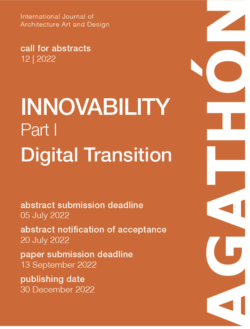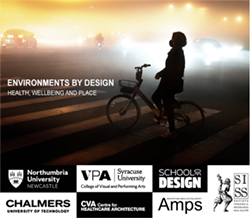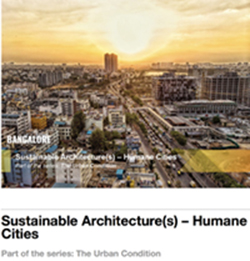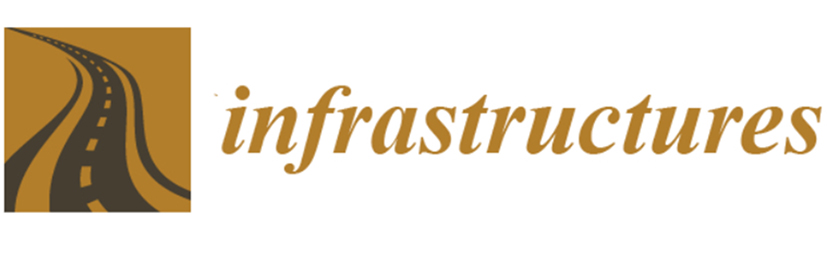ISSN (online): 2412-3811
Call of the Journal:
- Advances in the Management and Application of Construction and Demolition Waste
- Agricultural Infrastructure
- Application of Artificial Intelligence to Model the Behavior of Infrastructure
- Application of Machine Learning and Artificial Intelligence in NDE and Structural Health Monitoring of Civil Infrastructures
- Big Data Analysis and Visualization in Transport Infrastructure | Challenges for Operations, Control, and Planning
- Critical Infrastructure Resilience Facing Extreme Weather Events
- Designing and Managing the Next Generation of Transportation Infrastructure
- Durability of Concrete Infrastructure
- Innovative Practices into Road Pavement Maintenance Management
- Inspection, Assessment and Retrofit of Transport Infrastructure
- Neural Networks in Land Transport, Vehicle and Railway Engineering
- Non-destructive Testing and Evaluation for Civil Infrastructures
- Pavement Management | Inspection and Life-Cycle Assessment
- Pedestrian and Bicycle Mobility in the Future Cities of the World | Between Adapting Infrastructure and Changing Behavior
- Rail Infrastructures
- Reliability and Durability of Pipelines
- Remote Sensing and Infrastructure Information Models | Methods, Applications and Smart Management of Infrastructure Data
- Research and Developments in Pavements
- Resilient and Smart Transport Infrastructure for Connected and Autonomous Vehicles
- Reusing, Recycling and Repurposing Infrastructure | Components and Construction Materials
- Road and Rail Infrastructures
- Seismic Reliability Assessment and Advances in Structural Modelling
- Selected Papers from the 8th Civil Structural Health Monitoring Workshop
- Smart Infrastructures
- Smart Materials for Sustainable Infrastructures
- Smart, Sustainable and Resilient Infrastructures
- Structural Assessment and Health Monitoring of Infrastructures
- Structural Health Monitoring of Civil Infrastructures
- Structural Performances of Bridges
- Sustainability of Building Materials and Structures
- Sustainability of Concrete Infrastructures | New Applications, Monitoring and Retrofitting
- Ultra-High Performance Concrete (UHPC)
- Underground Infrastructure Engineering
Mar
2021
Apr
2021
Pipelines are extremely important for modern society because they are the medium for the transportation of water, wastewater, oil, and gas. A pipeline failure or rupture is likely to occur when the environmental and operational stresses act upon a pipe whose structural integrity has been compromised by corrosion, degration, inadequate installation, or manufacturing defects. Pipeline failure can be sudden and catastrophic, can impact the lives of hundreds or thousands of people, and can cost millions of dollars. Pipeline failure is an environmental, safety, economic, and operational issue. These factors are the basis for the installation of pipelines and also have significant influence on the decision to renew pipelines. In selecting an appropriate trenchless pipeline renewal method, it is important to consider durability, reliability, load-carrying strength (hydrostatic and soil/traffic in addition to internal pressures), social impacts, constructability and bypassing requirements, pipe section lengths, and types of joints, as well as the suitability of a specific method and the availability of qualified contractors. The aim of the renewal selection process is to consider all factors to arrive at the most cost-effective and technically viable solution. Globally, pipe renewal costs may reach more than trillions of dollars in the coming decade; therefore, there is a need to determine a suitable material that maximizes both the durability and reliability of pipelines. Overall, corrosion resistance, hydraulic efficiency, flexibility, abrasion resistance, toughness, fused joints, and long service life are among the important factors for determining the durability and reliability of pipelines. Proper design, specifications, installation, and operation typically mitigate any reduction in durability and reliability due to the aforementioned issues. Because all pipeline projects impact the environment and society, the goal of a pipeline design is generally to choose durable products that perform as intended, that have an acceptable cost, that avoid adverse environmental impact, and that satisfy societal needs, both in the short and the long term. Sustainable products provide performance and quality levels equivalent to their less-sustainable alternatives while minimizing any adverse environmental and societal impacts. The reliability and durability of pipelines can also help field engineers and utility owners in understanding the best structural analysis methods and in more accurately predicting the life of their pipeline assets. This Special Issue calls for state-of-the-art research and practices focusing on different aspects of the renewal of buried pipes, utility conduits, and culverts, using trenchless technologies to gain further insights into the reliability and durability issues of pipelines. Reviews on the research and practices of this field are also considered within the scope of this Special Issue.
Keywords: Pipeline asset management; Trenchless pipeline renewal; Fatigue resistance; Pipe material properties; Pipe corrosion; Sustainable pipeline construction; Extreme event impacts on pipelines (earthquakes, tornadoes, floods, hurricanes, cyclones, etc.); Sustainable pipeline material; Life expectancy.
Reliability and Durability of Pipelines
Pipelines are extremely important for modern society because they are the medium for the transportation of water, wastewater, oil, and gas. A pipeline failure or rupture is likely to occur when the environmental and operational stresses act upon a pipe whose structural integrity has been compromised by corrosion, degration, inadequate installation, or manufacturing defects. Pipeline failure can be sudden and catastrophic, can impact the lives of hundreds or thousands of people, and can cost millions of dollars. Pipeline failure is an environmental, safety, economic, and operational issue. These factors are the basis for the installation of pipelines and also have significant influence on the decision to renew pipelines. In selecting an appropriate trenchless pipeline renewal method, it is important to consider durability, reliability, load-carrying strength (hydrostatic and soil/traffic in addition to internal pressures), social impacts, constructability and bypassing requirements, pipe section lengths, and types of joints, as well as the suitability of a specific method and the availability of qualified contractors. The aim of the renewal selection process is to consider all factors to arrive at the most cost-effective and technically viable solution. Globally, pipe renewal costs may reach more than trillions of dollars in the coming decade; therefore, there is a need to determine a suitable material that maximizes both the durability and reliability of pipelines. Overall, corrosion resistance, hydraulic efficiency, flexibility, abrasion resistance, toughness, fused joints, and long service life are among the important factors for determining the durability and reliability of pipelines. Proper design, specifications, installation, and operation typically mitigate any reduction in durability and reliability due to the aforementioned issues. Because all pipeline projects impact the environment and society, the goal of a pipeline design is generally to choose durable products that perform as intended, that have an acceptable cost, that avoid adverse environmental impact, and that satisfy societal needs, both in the short and the long term. Sustainable products provide performance and quality levels equivalent to their less-sustainable alternatives while minimizing any adverse environmental and societal impacts. The reliability and durability of pipelines can also help field engineers and utility owners in understanding the best structural analysis methods and in more accurately predicting the life of their pipeline assets. This Special Issue calls for state-of-the-art research and practices focusing on different aspects of the renewal of buried pipes, utility conduits, and culverts, using trenchless technologies to gain further insights into the reliability and durability issues of pipelines. Reviews on the research and practices of this field are also considered within the scope of this Special Issue.
Keywords: Pipeline asset management; Trenchless pipeline renewal; Fatigue resistance; Pipe material properties; Pipe corrosion; Sustainable pipeline construction; Extreme event impacts on pipelines (earthquakes, tornadoes, floods, hurricanes, cyclones, etc.); Sustainable pipeline material; Life expectancy.
DOAJ, Inspec (IET), Scopus (Elsevier), CLOCKSS (Digital Archive), e-Helvetica (Swiss National Library Digital Archive), Google Scholar, J-Gate (Informatics India), ProQuest Central (ProQuest), Science In Context (Gale/Cengage Learning).
Info at: www.mdpi.com/journal/infrastructures/apc
Guest Editors
Dr. Mohammad Najafi
Dr. Vinayak Kaushal










